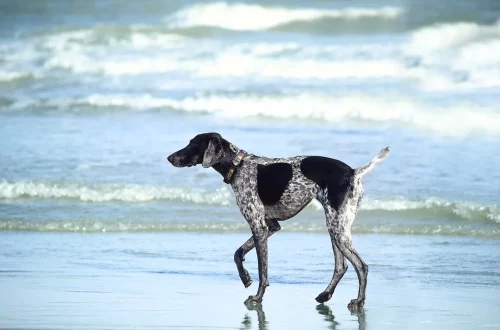
Understanding and Treating Dog Ingrown Nails for Better Paw Health
Dogs are beloved companions that bring joy and comfort to our lives. As pet owners, we take on the responsibility of ensuring their health and well-being, which includes regular grooming and monitoring for any signs of distress. One common yet often overlooked issue that can affect our furry friends is ingrown nails. Ingrown nails occur when a dog’s nail grows into the surrounding skin, leading to pain, infection, and potential mobility issues. This condition is not only uncomfortable for the dog but can also impact their quality of life.
Understanding the causes and symptoms of ingrown nails is crucial for pet owners. Many factors can contribute to the development of this condition, including improper nail trimming, genetic predisposition, and certain health issues that might affect a dog’s ability to wear down their nails naturally. Recognizing the early signs of ingrown nails is essential for timely intervention. Left untreated, ingrown nails can lead to more severe complications, including abscesses or systemic infections.
As pet owners, it is our duty to be vigilant and proactive about our dogs’ paw health. By understanding how to manage and treat ingrown nails, we can help our furry friends live healthier, happier lives. This article delves into the various aspects of dog ingrown nails, exploring their causes, preventive measures, and effective treatment options to ensure our pets have the best paw health possible.
Causes of Ingrown Nails in Dogs
Ingrown nails in dogs can arise from a variety of factors. Understanding these underlying causes is essential for prevention and effective management. One of the primary reasons for ingrown nails is improper nail trimming. When nails are cut too short, or the nail bed is not appropriately handled, it can lead to the nail growing incorrectly. This issue is particularly common among breeds that have long nails or those that do not wear down their nails naturally due to a lack of activity or specific environmental conditions.
Another contributing factor is genetics. Some dog breeds are more prone to nail issues, including ingrown nails. Breeds with curled or particularly thick nails may experience more frequent incidents of ingrown nails. Additionally, certain health conditions, such as obesity or arthritis, can limit a dog’s mobility, preventing them from naturally wearing down their nails through regular activity. This lack of wear can cause the nails to grow excessively long, increasing the risk of them growing into the surrounding skin.
Environmental factors can also play a role in the development of ingrown nails. For example, if a dog spends a lot of time on hard surfaces, their nails may not wear down evenly, leading to abnormal growth patterns. Furthermore, dogs that are kept in confined spaces may not get the necessary exercise to keep their nails trimmed naturally. It’s crucial for dog owners to be aware of these factors and to take proactive measures to ensure their pets’ nails are well-maintained.
Regular veterinary check-ups can also help identify any underlying health issues that may contribute to nail problems. If a dog is experiencing persistent nail problems, it may be a sign of an underlying health condition that needs addressing. By understanding these causes, pet owners can take the necessary steps to prevent ingrown nails and promote better paw health for their furry companions.
Symptoms to Watch For
Recognizing the symptoms of ingrown nails is vital for early intervention and treatment. Dogs may exhibit various signs when they experience this painful condition. One of the most noticeable symptoms is limping or favoring one paw over another. If your dog seems to be in pain while walking or is hesitant to put weight on their paw, it could be an indication of an ingrown nail.
Another common sign is swelling or redness around the nail bed. If you notice any inflammation or discharge, this may suggest an infection has developed due to the ingrown nail. Dogs might also exhibit behaviors such as excessive licking or chewing at their paws, which can further exacerbate the problem. If your dog is constantly trying to nibble or paw at their feet, it’s essential to investigate further.
In some cases, you may be able to visually inspect the nails and see that they are growing into the paw pad or surrounding skin. This can be quite painful for the dog and may lead to more severe complications if not treated promptly. If you suspect your dog has an ingrown nail, it’s crucial to consult your veterinarian for a proper diagnosis and treatment plan.
It’s important to note that some dogs may not show overt signs of discomfort, especially if they have a high pain tolerance. Regularly checking your dog’s paws and nails can help catch potential issues early. Establishing a routine for nail care and inspection can make a significant difference in your dog’s overall paw health. Being proactive in monitoring your dog’s nails will not only help in preventing ingrown nails but also ensure that your furry friend remains happy and active.
Treatment Options for Ingrown Nails
When it comes to treating ingrown nails, the approach can vary depending on the severity of the condition. If you suspect your dog has an ingrown nail, the first step is to consult your veterinarian. They will be able to assess the situation and recommend the most appropriate treatment plan. In mild cases, the veterinarian may simply trim the ingrown nail and clean the affected area to prevent infection. This can often provide relief to the dog and help the nail to grow correctly.
In more severe cases, where there is significant infection or damage to the surrounding skin, your veterinarian may need to perform a more extensive procedure. This can involve removing the affected nail and cleaning the infected area. In some cases, antibiotics may be prescribed to treat any underlying infection and promote healing. It’s crucial to follow your veterinarian’s instructions carefully during the recovery process to ensure your dog’s paw heals properly.
Home care can also play a role in the treatment of ingrown nails. After a veterinary visit, you may need to keep your dog’s paw clean and dry while it heals. Applying antiseptic ointments as prescribed and monitoring for any signs of worsening infection will be essential. Additionally, keeping your dog from excessive licking or chewing at their paws can help prevent complications during the healing process.
Preventive care is equally important. Regular nail trimming is vital in preventing ingrown nails. If you are unsure how to trim your dog’s nails safely, consult your veterinarian or a professional groomer for guidance. Establishing a regular grooming routine can help keep your dog’s nails at a healthy length and promote overall paw health.
Ultimately, treating and preventing ingrown nails requires a combination of vigilance, proper care, and professional guidance. By being proactive and attentive to your dog’s paw health, you can help them avoid the discomfort associated with ingrown nails and keep them happy and active.
**Disclaimer:** This article is for informational purposes only and does not constitute medical advice. Always consult your veterinarian for any health concerns regarding your pets.




